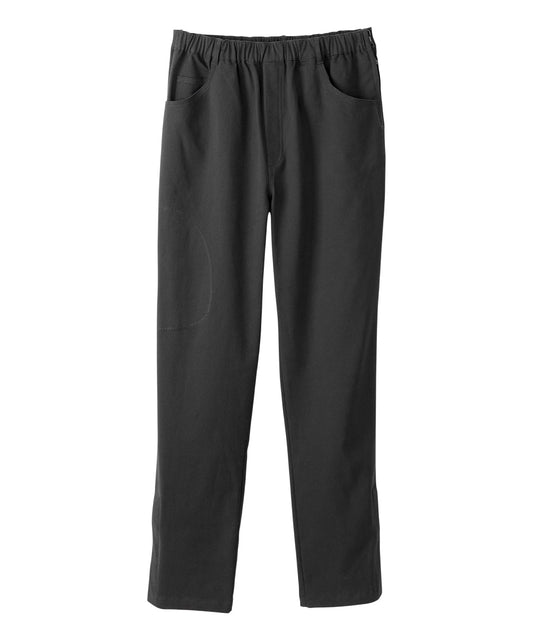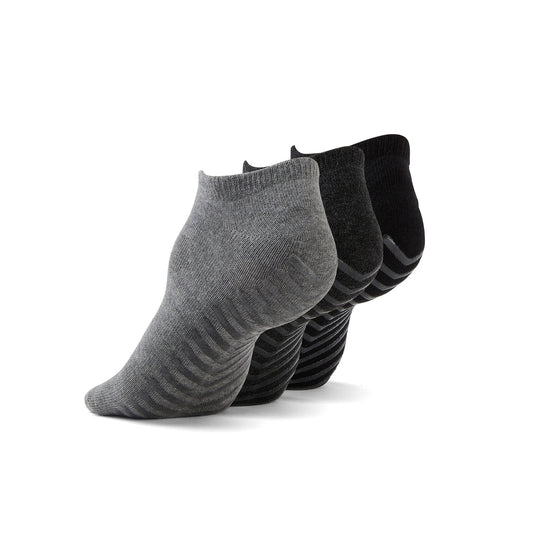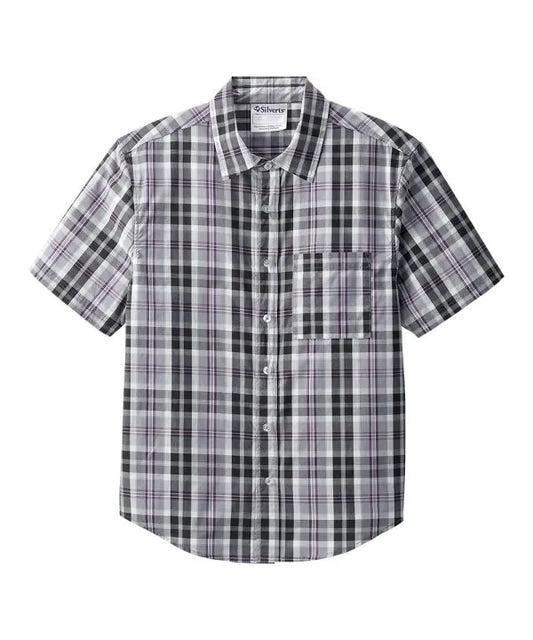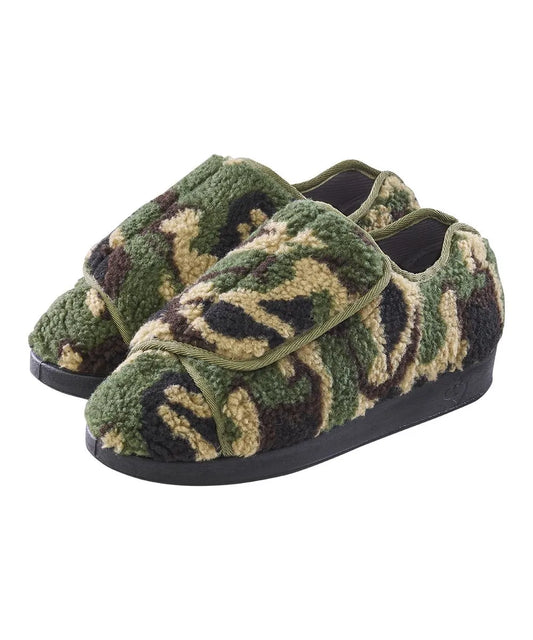Written by: Zuhair Augla
Staying active is important at any time in life, but as we age, physical activity becomes even more critical to one's well-being. Exercise helps keep our bodies strong, our minds sharp, and our spirits lifted. Yet, too often, how we dress for physical activity becomes just as important as the exercises we choose. For older adults, it's not just about comfort or flexibility; it's also about safety, confidence, and enjoyment. The right clothes can make exercising more enjoyable, remove barriers to movement, and help us feel motivated to be active. This is where adaptive sports fashion comes in a thoughtful and responsive approach to exercise attire designed to meet the unique needs and preferences of those in their later years.
Adaptive sports fashion considers not just our changing bodies but the environments in which we have stayed active and the activities we love to pursue: from a brisk walk around the neighborhood to a gentle yoga class and light cycling. Your clothes have the potential to make or break your experience. It is essential to select clothes that will give the right support to the body, offer free movements, and make you fresh and secure. From fabrics developed for physical activity to fitting, empowerment, and output, this guide covers every aspect to help the aged yield a perfect balance of comfort, style, and functionality in their activewear.
What Are Some Fabrics Tailored to Physical Activity?
Choosing fabric is one of the most essential things in designing adaptive sportswear. Fabric can make a huge difference: it determines how comfortable you are as you move and how well the wearing supports your body. Given that age conditions the natural physiological mechanisms, this might be an issue for older adults in choosing materials that are soft against the skin but still support the body's natural function when cooling down or in humid conditions without giving sticky or cold feelings once respiration occurs.
Natural fibres, such as cotton, have been widely used to date due to their soft feel and breathability. Cotton fabric feels nice against the skin and allows air to pass through to prevent overheating. However, cotton can absorb sweat in your body and take more time to dry up; this may not be so good if you are engaging in higher-intensity activities or prefer a dry feeling instead of wet fabric against your skin.
Modern synthetic fibres, like those blended from polyester or nylon, are designed for working out. Many of these fabrics offer the benefit of moisture wicking: they pull sweat off your skin and facilitate evaporation. This means you're drier and much cooler. These fabrics can be woven with stretch so clothes move with you, rather than holding you back. Some adaptive sportswear brands even incorporate fabrics with antibacterial properties to reduce odours, ensuring you remain fresh and confident throughout your activities. https://www.juneadaptive.com/products/mens-crew-neck-t-shirt-with-back-overlap This adaptive crew neck found on the June Adaptive website is a shirt made from polyester, and it is perfect for physical activity.

Another noteworthy category is blended fabrics, which combine natural and synthetic fibres. For instance, a blend of cotton and polyester might provide the softness of cotton while allowing for quicker drying times. Bamboo-based fabrics are also gaining popularity due to their smooth texture, breathability, and sustainability. They are gentle to sensitive skin and allow effective body temperature regulation. The bottom line is to experiment with various fabrics, notice what your body feels like during and after activities, and choose the ones that make you feel cool, dry, and comfortable.
How Do You Ensure What Is Best to Wear While Active?
There are several factors involved in finding the best choice of clothing for any activity: comfort, support, range of motion, and the environment in which the exercise is performed. When we age, choose garments that do not chafe, pinch, or otherwise irritate the skin. The seams are best when flat or covered since they tend to cause minimal irritation from skin friction. Many adaptive clothing brands design garments with minimal internal stitching or use gentle and smooth fabrics on the inside.
Fit is also a primary consideration. Too loose clothing may get in the way, potentially causing trips or mishaps. Conversely, clothing that is too tight can restrict blood flow, limit movement, and create discomfort. The best fit is one that skims your body without being too tight. Many adaptive activewear pieces incorporate adjustable elements, like drawstrings, elastic waistbands, or Velcro closures, that let you tailor the fit. If you struggle with specific types of fasteners, opt for clothes that are easy to slip on and off, such as items with front zippers, magnetic closures, or ample armholes and necklines.
And finally, take into consideration where you are going to exercise: outside, in which case you will probably want fabrics that are protective against the sun, or longer-sleeved and legged items of clothing; when cooler, you might consider layering options like a base layer with moisture wicking capability underneath a lightweight jacket or vest. Indoors, like in a community center or a gym, you may be comfortable with lighter fabrics and less layering. Also, pay attention to some details, such as pockets or loops that help you carry small items like keys, a phone, or a fitness tracker.
Most importantly, consider your special physical challenges or health conditions. If you have arthritis, opt for garments with easier fastenings. If you experience edema or swelling in certain areas, look for items of clothing that have some 'give' or are cut to allow for expansion in the body. Spending time working out what options work for you, and which features make you feel supported and mobile, will make a huge difference. What to Look for to Feel Empowered Whilst Being Active?
Beyond comfort and function, your clothes can significantly impact your mindset. Feeling empowered means choosing clothing that you enjoy wearing garments that make you feel confident, capable, and ready to move. For older adults, empowerment often comes from knowing that what you're wearing is designed with your needs in mind rather than forcing you to adapt to clothing not suited to your body or abilities.
Your adaptive sportswear should also respect your comfort and dignity. If you feel self-conscious about certain body areas, opt for clothing that provides coverage or shaping without feeling restrictive. Some garments are designed with discreet support panels, higher waistlines, or longer hemlines that help you feel more secure. Wearing clothes that fit well and feel supportive can reduce distractions and help you focus on enjoying your activity rather than worrying about your appearance.
Finally, empowerment can stem from understanding that your activewear was made ethically and sustainably. Some older adults value supporting brands using environmentally friendly fabrics or practicing fair labour. Feeling good about where your clothes originate and how they're made can add confidence and pride to your choices.
What Are Some Choices to Maximize Physical Activity Output?
Maximizing physical activity output doesn't always mean going beyond your limit; it often means optimizing your environment and equipment so you can perform at your best, safely and comfortably. The right clothes will help you move better and focus more on your training, thus enhancing the quality of your workouts.
Start with clothing designed to facilitate movement. Look for clothes featuring stretch panels or gussets, which are special inserts usually allowing extra flexibility around certain areas such as the shoulders or knees. This could be great for certain activities, such as yoga, tai chi, or light flexibility training, that rely on extensive ranges of motion. Walking or jogging calls for pants or shorts in lightweight, quick-dry material. These keep you dry and prevent the weight of sweat from dragging you down, allowing you to move at a constant pace without being distracted.
In activities such as cycling or using exercise machines, pants or shorts that fit well but are not too tight can minimize the risk of material getting caught in gears or pedals. For aquatic activities, swimsuits or swim shorts made from chlorine-resistant, quick-drying fabrics can improve comfort and confidence in the pool. Choosing tops with the right necklines or sleeves can matter if your activity involves raising your arms. For example, a shirt that rides up or constricts at the shoulders can become bothersome.
Footwear is also part of your active "outfit." While not strictly clothing, choosing supportive, properly fitted shoes or sandals designed for activity can enhance your stability and reduce discomfort. Adaptive footwear options may include shoes with Velcro straps instead of laces, wider toe boxes for sensitive feet, or insoles that provide better arch support.https://www.juneadaptive.com/products/mens-wide-easy-on-shoes This pair of running shoes is the perfect blend of adaptability made for exercise and fashion. The shoe velcro straps are a game-changer, and they can be found on the June Adaptive website.

In addition, consider how undergarments and accessories can support your movement. Adaptive sports bras, with easier-on-and-off designs, may become indispensable to older women with restricted shoulder mobility. Compression socks will improve your circulation, reducing fatigue from those long walks or gentle hikes. Headbands or sweat-wicking caps keep perspiration out of your eyes so you can pay attention to your actions. Every piece of your outfit contributes to how well you can move, how long you can maintain comfortable activity, and how much enjoyment you derive from the experience.
Conclusion
Adaptive fashion in sports is more than wearing the "right" clothes; it is all about recognizing the special needs that come with older age and offering solutions to keep you doing what you love. The right fabrics can make a difference in keeping you cooler, drier, and more comfortable while you work out. A proper fit and style let you move with confidence and without distraction. Choosing clothes that reflect your values and personal style can empower you, boosting your physical activity and your well-being. https://www.juneadaptive.com/products/womens-active-top-with-back-overlap This women's activewear crew neck does the job it is easy to put on and discrete, making it the perfect adaptive top, and it can be found on the June Adaptive website.

It is worth investing some time in trying and finding out what fabrics, cuts, and features work best for your body and activities. If you tend to sweat a lot, try starting with moisture-wicking fabrics; if you value freedom of movement, try stretchy materials. Instead of merely settling, try putting that money into pieces that create a huge amount of comfort for you: a great pair of fitted pants without that bulk at your waist, tops without tricky removal and putting on motions, and hats that perform excellent jobs for face protection yet just wouldn't feel uncomfortably strained. Over time, build that special adaptive sportswear collection truly supportive of the actives.
Remember, being active as an older adult is a journey that's about learning what works best for you. When your clothing is in sync with your needs, you can spend less time adjusting straps, tugging at hemlines, or overheating and more time simply enjoying your movement. Whether you’re walking through a park, joining a gentle gym class, or practicing yoga in your living room, the right outfit can encourage you to stay engaged, motivated, and empowered. Adaptive sports fashion aims to remove barriers so you can continue feeling strong, confident, and active well into your later years.
To learn more about adaptive wear, check out the JuneAdaptive website https://www.juneadaptive.com/















